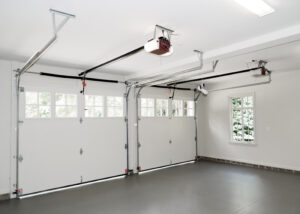Pipeline weight bags are crucial tools used in various industries to ensure the stability and protection of pipelines during installation and operation. These bags, typically filled with heavy materials such as sand or gravel, are designed to anchor pipelines securely in place, preventing movement and damage. This article will explore the features, benefits, applications, and frequently asked questions about pipeline weight bags, providing a comprehensive guide to understanding their role and importance.
What Are Pipeline Weight Bags?
Pipeline weight bags are robust, heavy-duty bags used to stabilize and protect pipelines during installation and transportation. They are designed to be filled with materials like sand, gravel, or other heavy substances, which provide the necessary weight to keep the pipeline in position. The Durable Pipeline Weight Bags are made from durable fabrics, such as woven polypropylene or nylon, that can withstand harsh environmental conditions and resist tearing or puncturing.
Pipeline weight bags are commonly used in construction, oil and gas, and water management industries. They play a crucial role in ensuring that pipelines remain stable and secure, minimizing the risk of shifting or damage that could lead to costly repairs or operational disruptions.
Key Features of Pipeline Weight Bags
Pipeline weight bags are designed with several key features to ensure their effectiveness and durability. These features include:
1. Durable Construction
Pipeline weight bags are made from high-strength materials, such as woven polypropylene or nylon, that are resistant to abrasion, tearing, and puncturing. This durability ensures that the bags can withstand the weight of the filling material and the stresses encountered during installation.
2. Heavy-Duty Fill Material
The primary function of pipeline weight bags is to provide weight to stabilize pipelines. They are typically filled with heavy materials like sand, gravel, or stones, which provide the necessary mass to anchor the pipeline securely in place.
3. Weather Resistance
Pipeline weight bags are designed to endure various weather conditions, including rain, snow, and extreme temperatures. The materials used in their construction are resistant to moisture and UV rays, preventing degradation and ensuring a long service life.
4. Versatile Sizes and Shapes
Pipeline weight bags come in various sizes and shapes to accommodate different pipeline diameters and installation requirements. They can be customized to fit specific project needs, ensuring optimal stability and support.
5. Ease of Handling
Despite their heavy-duty construction, pipeline weight bags are designed to be easy to handle and deploy. They typically feature reinforced handles or loops for convenient lifting and placement, reducing the risk of injury during installation.
6. Reusability
Many pipeline weight bags are designed to be reusable, allowing them to be emptied and refilled as needed. This feature reduces waste and provides a cost-effective solution for multiple projects.
Benefits of Using Pipeline Weight Bags
Pipeline weight bags offer several benefits that make them an essential component in pipeline installation and maintenance. Some of the key advantages include:
1. Enhanced Stability
The primary benefit of pipeline weight bags is their ability to provide stability to pipelines. By anchoring the pipeline securely in place, these bags prevent movement that could lead to misalignment, damage, or leaks.
2. Protection During Installation
Pipeline weight bags protect pipelines during installation by preventing shifting or rolling. This protection reduces the risk of damage to the pipeline and ensures that it remains in the correct position throughout the installation process.
3. Cost-Effective Solution
Using pipeline weight bags is a cost-effective way to stabilize pipelines compared to other methods, such as using concrete blocks or specialized anchoring systems. The bags are relatively inexpensive and can be reused for multiple projects, providing a good return on investment.
4. Easy to Deploy
Pipeline weight bags are easy to deploy and handle, making them a practical choice for large-scale pipeline installations. Their lightweight nature, combined with reinforced handles or loops, simplifies the process of placing and adjusting the bags as needed.
5. Adaptability
Pipeline weight bags can be customized to fit various pipeline sizes and shapes, ensuring that they provide optimal stability and support. This adaptability makes them suitable for a wide range of applications, from small residential pipelines to large industrial installations.
6. Reduced Environmental Impact
By using pipeline weight bags instead of concrete blocks or other materials, you can reduce the environmental impact of your project. The bags are reusable and often made from recyclable materials, contributing to a more sustainable approach to pipeline stabilization.
Applications of Pipeline Weight Bags
Pipeline weight bags are used in various industries and applications where pipeline stability is crucial. Some common applications include:
1. Construction
In construction projects, Water-Filled Pipeline Weight Bags are used to stabilize pipelines during installation, preventing movement and ensuring proper alignment. They are particularly useful in trenchless construction methods, where traditional anchoring methods may be challenging to implement.
2. Oil and Gas Industry
Pipeline weight bags are essential in the oil and gas industry for stabilizing pipelines during transportation and installation. They help prevent shifting and damage that could compromise the integrity of the pipeline and disrupt operations.
3. Water Management
In water management projects, pipeline weight bags are used to anchor pipelines in place, ensuring that they remain stable and secure. This stability is crucial for maintaining proper water flow and preventing leaks or damage to the pipeline.
4. Mining
Pipeline weight bags are employed in mining operations to stabilize pipelines that transport minerals or slurry. They help prevent movement and damage to the pipelines, ensuring efficient and reliable operation.
5. Agriculture
In agricultural applications, pipeline weight bags are used to secure irrigation pipelines and prevent shifting. This stability helps maintain proper water distribution and reduces the risk of damage to the irrigation system.
Conclusion
The Custom pipeline weight bags are a vital tool in ensuring the stability and protection of pipelines during installation and operation. Their durable construction, weather resistance, and versatility make them an essential component in various industries, including construction, oil and gas, water management, mining, and agriculture. By providing reliable stabilization and protection, pipeline weight bags contribute to the successful and efficient operation of pipeline systems, reducing the risk of damage and ensuring long-term performance. Understanding the features, benefits, and applications of pipeline weight bags can help you make informed decisions and achieve optimal results in your pipeline projects.
Frequently Asked Questions (FAQs)
1. What materials are used to make pipeline weight bags?
Pipeline weight bags are typically made from high-strength materials such as woven polypropylene or nylon. These materials are chosen for their durability, resistance to abrasion, and ability to withstand heavy loads.
2. How much weight can a pipeline weight bag support?
The weight capacity of a pipeline weight bag depends on its size and construction. Generally, these bags can support a significant amount of weight, often ranging from 25 to 100 pounds or more, depending on the project requirements.
3. Can pipeline weight bags be reused?
Yes, many pipeline weight bags are designed to be reusable. They can be emptied and refilled with new material as needed, making them a cost-effective and environmentally friendly solution for multiple projects.
4. How do I choose the right size of pipeline weight bags for my project?
Choosing the right size of pipeline weight bags depends on the diameter and weight of the pipeline, as well as the specific installation requirements. It is essential to consult with a supplier or engineer to determine the appropriate size and capacity for your project.




